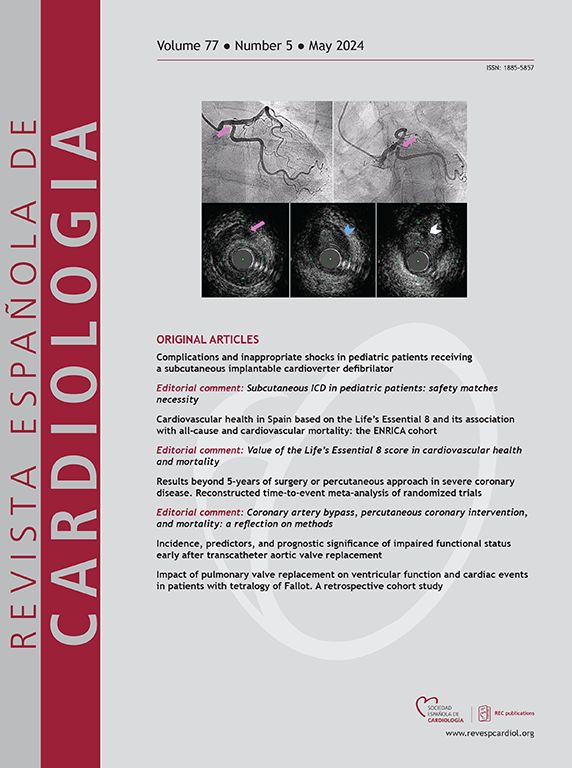用于无创预测心房颤动患者左心房阑尾血栓的蛋白质组生物标志物
IF 5.9
2区 医学
Q2 Medicine
引用次数: 0
摘要
本文章由计算机程序翻译,如有差异,请以英文原文为准。
Biomarcadores proteómicos para la predicción no invasiva de trombos en la orejuela izquierda de pacientes con fibrilación auricular
Introduction and objectives
The CHA2DS2-VASc score, used to assess the risk of left atrial appendage thrombus (LAAT) formation in patients with atrial fibrillation (AF), has limited predictive value. Moreover, transesophageal echocardiography imaging, the gold standard diagnostic method to identify thrombi, is semi-invasive. Consequently, there is a need for alternative and noninvasive diagnostic methods for LAAT risk assessment.
Methods
Deep proteomic analysis was conducted in plasma samples from 8 patients with nonvalvular AF, divided into thrombus and control groups (4 patients in each group) based on the presence or absence of LAAT. Biomarkers associated with LAAT were validated using an enzyme-linked immunosorbent assay in a cohort of 179 patients with available clinical, transthoracic, and transesophageal echocardiography data. Predictive models were developed to assess the improvement in LAAT identification.
Results
The LAAT group had higher CHA2DS2-VASc scores, larger LA diameter, and lower LAA flow velocities. Deep proteomic analysis identified 30 differentially expressed proteins, including myosin light chain 4, prenylcysteine oxidase 1 (PCYOX1), and decorin as potential diagnostic biomarkers of LAAT. The model showed that PCYOX1 and decorin provided an area under the curve (AUC) of 0.970 for LAAT prediction compared with 0.672 in a model including the CHA2DS2-VASc score and LAA cauliflower morphology. The incremental value of proteomic biomarkers for LAAT in patients with nonvalvular AF was further confirmed with the net reclassification improvement and integrated discrimination improvement indices.
Conclusions
Protein levels of PCYOX1 and decorin improve the predictive performance for LAAT in patients with nonvalvular AF.
求助全文
通过发布文献求助,成功后即可免费获取论文全文。
去求助
来源期刊

Revista espanola de cardiologia
医学-心血管系统
CiteScore
4.20
自引率
13.60%
发文量
257
审稿时长
28 days
期刊介绍:
Revista Española de Cardiología, Revista bilingüe científica internacional, dedicada a las enfermedades cardiovasculares, es la publicación oficial de la Sociedad Española de Cardiología.
 求助内容:
求助内容: 应助结果提醒方式:
应助结果提醒方式:


